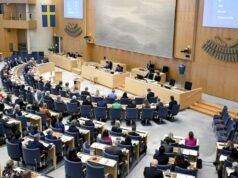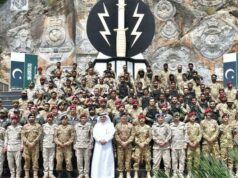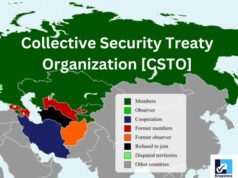By
LT GEN H S PANAG source Print
The Bangladesh Liberation War officially began on 3 December 1971, but the Indian Army had already begun ‘inching forward’ into East Pakistan from the second week of November. I have an interesting tale to tell from this period, which has become part of the glorious history of the war, albeit as a footnote.
I was the Adjutant (officer responsible for operational staff work) of 4th Battalion of the Sikh regiment (4 Sikh). Beginning 11 November, 4 Sikh had gradually secured an area six kilometres deep and eight kilometres wide across the international boundary, north of Boyra. On 20 November, we were ordered to establish a bridgehead across the Kabadak River at Chaugacha, which was about 15-20 kilometres northwest of Jessore. Beginning mid-day and led by a squadron of tanks, we rapidly advanced brushing aside minor opposition. At Chaugacha, the leading troops and tanks tried to rush the bridge, but it was blown up by the enemy. The far bank was held in strength and we firmed in on the western bank and began planning for a deliberate attack across the river.
The 14 Punjab regiment had crossed the river unopposed 10 kilometres to our southeast and established a bridgehead in the Garibpur village area. At first light on 21 November, in thick fog, Pakistan’s 6th Battalion of their Punjab regiment, with one squadron of Chafee tanks, counter-attacked the bridgehead held by14 Punjab. After a fierce battle, the counter-attack was repulsed with heavy losses to the enemy force.
As soon as the winter fog lifted, the Pakistan Air Force (PAF) became very active. From 21 November to mid-day of 22 November, 24 sorties were flown primarily against the positions of 4 Sikh and 14 Punjab. We repeatedly requested for fighter aircraft cover, but no clearance was given as war had not been officially declared yet.
At 3 pm on 22 November, I was returning to the unit headquarters from our logistics base when I saw three Pakistani Sabres coming in for probably the last sortie before sunset. The Sabres were carrying out high dive attack on our positions. In turn, the Sabres were climbing up to 2,000 feet and coming down to 500 feet for weapon release like the German Stuka bombers. Our medium machine gun and light machine guns were engaging the aircraft.
Suddenly, another mission of four fighter aircraft appeared from the east and flew over me at tree-top level. My jeep swayed and it appeared to me that the PAF had thrown its entire 14 Squadron into the battle to deter our impending attack on Chaugacha. Seconds later, three aircraft from the second mission peeled out of formation and headed for the Sabres, which, oblivious to their presence, were continuing with the dive attacks. It was clear that our Gnats had joined the battle. I stopped the jeep and stood waiting for the ‘dogfight’ to begin. It never took place, as in a jiffy, three of the four Gnats chose one unsuspecting Sabre each and closed in. The Gnats fired long bursts of 20 mm cannons and flames erupted from the three Sabres as they plunged towards the ground. It was all over in three minutes and the Gnats headed back to Kalaikunda airfield.
Two parachutes opened up from the plunging Sabres. The third Sabre wobbled back towards Jessore and made it to Dacca (now, Dhaka). One of the parachutes with the pilot drifted towards our defences. Our troops rushed out of the trenches towards the descending parachute. Fearing, that our jawans may assault the pilot in the heat of the moment, I also ran towards him as fast as I possibly could. When I was a stone’s throw away, three to four of our jawans had already knocked the pilot down and had started hitting him with rifle butts. More soldiers were running to join them. I shouted at them to stop. I had to physically move the jawans away and shield the pilot by lying down over him. I calmed down the jawans and assured the pilot that he was safe.
The pilot was tall and fit; he was shaken up and had a cut on his forehead, but put up a brave face.
As per procedure, I took him to the battalion headquarters. Our doctor dressed the wound on his forehead. I ordered a cup of tea for him and began his formal interrogation.
His name was Flight Lieutenant Parvaiz Qureshi Mehdi. He was the Squadron Commander of 14 Squadron PAF based at Dacca, and a Sword of Honour from the PAF Academy in 1964.
Mehdi had his wife’s photo in his pocket. I made a list of all his belongings: A watch, a 9 mm pistol, 30 rounds of ammunition and his survival kit.
I told him that he was now a prisoner of war (PoW) and would be treated as per Geneva Conventions. Interestingly, he had not seen the Gnats approaching and thought that he was hit by ground fire. His conduct, despite the shock of being shot down and taken PoW, was that of a very brave man — stoic and dignified.
The action at Chaugacha and Garibpur and the historic air battle made national and international headlines and is part of history now. Our Gnat pilots and air traffic controllers were deservedly decorated afterwards.
Parvaiz Qureshi Mehdi was the first PoW of the 1971 war and was imprisoned for one-and-a-half years. He would go on to become an Air Chief Marshal and the Chief of Pakistan Air Force (1997-2000).



